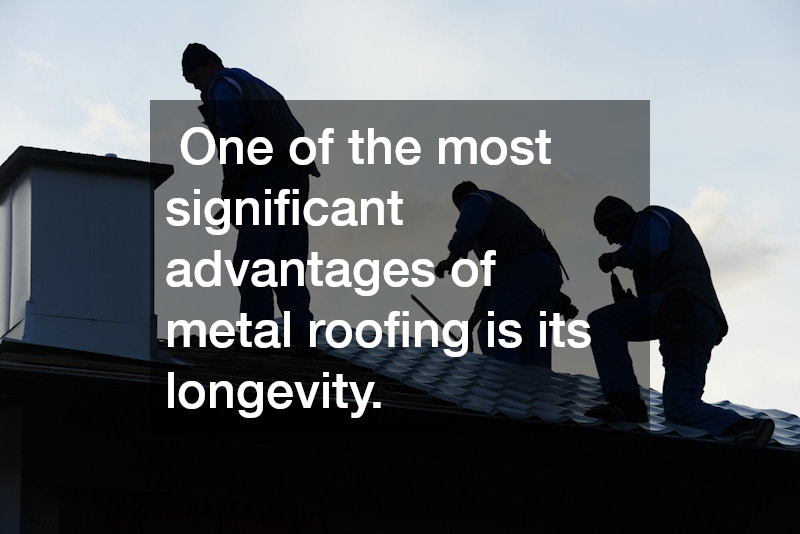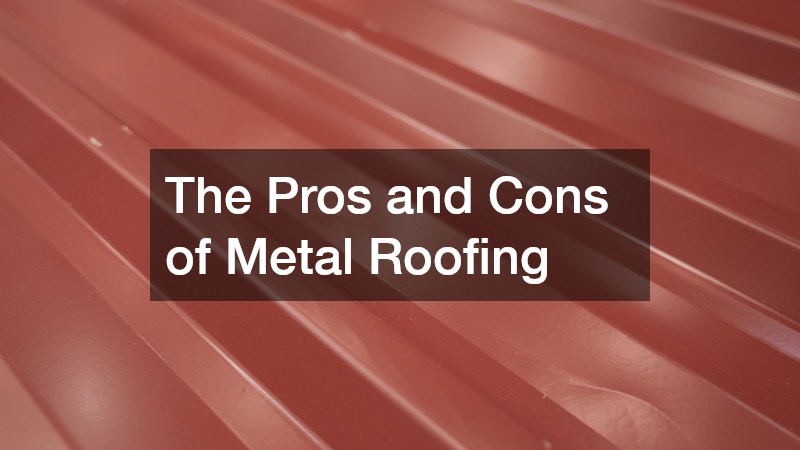
Metal roofing has become an increasingly popular choice for both residential and commercial properties. Known for its durability and long lifespan, it’s a roofing option worth considering. This article will delve into the advantages and disadvantages of metal roofing, providing detailed insights to help you make an informed decision.
Pros of Metal Roofing
One of the most significant advantages of metal roofing is its longevity. Unlike traditional asphalt shingles that may need replacing every 15-20 years, metal roofs can last up to 50 years or more when properly maintained. This long lifespan can ultimately save property owners money in the long run, as the cost of frequent replacements is reduced.
Metal roofs are also praised for their durability against extreme weather conditions. They are resistant to the effects of high winds, hail, and heavy snowfall. As a result, metal roofing provides a reliable option for regions that experience harsh weather, ensuring the safety and protection of the structures they cover.
Another advantage of metal roofing is its energy efficiency. Metal roofs reflect a significant amount of the sun’s heat, which can lower cooling costs in hotter climates. Additionally, many metal roofing systems incorporate reflective coatings that enhance this effect, contributing to overall energy savings and potentially reducing the carbon footprint of a building.
Cons of Metal Roofing
Despite its many benefits, metal roofing does have some drawbacks. One of the primary concerns is the initial cost. Metal roofs are typically more expensive to install compared to traditional roofing materials, which can be a significant investment for homeowners managing a tight budget. However, the long-term savings on replacement costs and energy bills may offset the upfront expense over time.
Noise can also be an issue with metal roofing, particularly during heavy rain or hailstorms. While some homeowners appreciate the sound of rain on a metal roof, others may find it disruptive. Fortunately, this issue can be mitigated by installing additional insulation or using underlayment materials designed to dampen sound.
Another potential disadvantage is susceptibility to denting. While metal roofs are durable, certain materials like aluminum are softer and can be dented by heavy hail or falling branches. However, opting for thicker gauge metal or choosing materials such as steel can minimize this risk, providing a more robust solution for regions prone to such occurrences.
Environmental Impact of Metal Roofing
Metal roofing offers several environmental benefits that make it an attractive option for eco-conscious property owners. One notable advantage is that metal roofs are often made from recycled materials, reducing the demand for new raw materials. Furthermore, at the end of their long lifespan, metal roofs can be fully recycled, minimizing waste in landfills.
In addition to being recyclable, metal roofs contribute to energy efficiency, as previously mentioned. By reflecting solar radiation, they help reduce the need for air conditioning, lowering energy consumption. This energy-saving characteristic supports sustainable building practices, making metal roofing a popular choice among green builders and architects.
Another environmental benefit is the potential for installing solar panels. The strong and durable nature of metal roofing makes it an ideal base for mounting solar panels. This compatibility not only generates additional clean energy but also further enhances the eco-friendly appeal of metal roofs, resulting in long-term environmental and financial benefits.
Aesthetic Considerations
Metal roofing has evolved in terms of style and aesthetics, offering a variety of design options to complement different architectural styles. Available in an array of colors, finishes, and profiles, homeowners can choose a metal roof that enhances the curb appeal of their property. It’s also worth noting that metal roofing mimics the look of traditional roofing materials, such as shingles or tiles, providing versatility in appearance.
Despite these options, some people may still associate metal roofing with an industrial look that doesn’t fit with their vision for their home. In such cases, it’s crucial to explore the various design choices available and consider consulting with a professional to find a suitable match. Ultimately, the aesthetic appeal of metal roofing is subjective and depends on personal preferences.
Maintaining the appearance of a metal roof is relatively easy. With minimal requirements for cleaning and care, property owners can enjoy a lasting and attractive finish. Routine maintenance, such as removing debris and checking for minor repairs, ensures the roof’s aesthetic and functional longevity.
In conclusion, metal roofing offers a range of benefits, including durability, energy efficiency, and environmental friendliness. While the initial cost and potential for noise might be drawbacks for some, these issues can often be addressed with appropriate measures. Overall, metal roofing represents a viable and versatile option for many property owners, providing long-term value and enhanced curb appeal.
For those considering a new roof, weighing the pros and cons of metal roofing is essential. Understanding the implications of this choice can lead to more informed decisions and greater satisfaction with the final result. As you explore roofing options, consider the specific needs of your property and whether the advantages of metal roofing align with your goals and priorities.
The key takeaway is that metal roofing is more than just a functional feature; it can also play a significant role in the aesthetic and environmental profile of a building. By choosing a high-quality metal roof, owners can secure an attractive, long-lasting, and sustainable solution for their homes or businesses.

